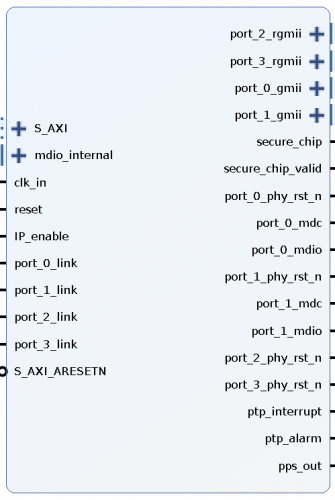
The demand for higher bandwidth in the car is growing quickly. On one side, all the entertainment and connectivity elements, and on the other, all the control related electronics.
As a result, the automotive manufacturers are adding a plethora of computer-based systems that need interconnection. Ethernet, with the latest innovations, is the best candidate to face this challenge from the technical and economical point of view.
Historically, the use of packet-switched networks has been avoided by automotive manufacturers for multimedia applications due to their non-deterministic nature. However, deterministic Ethernet solutions, like AVB, deliver streams with guaranteed bandwidth and deterministic latency for highly reliable and low-latency applications like those found within an automobile.
Audio Video Bridging (AVB) is a common name for the set of technical standards that allow time-synchronized low latency streaming services through Ethernet networks. They have been developed by the Institute of Electrical and Electronics Engineers (IEEE) Audio Video Bridging Task Group. These consist of:
- IEEE 802.1BA: Audio Video Bridging (AVB) Systems
- IEEE 802.1AS: Timing and Synchronization for Time-Sensitive Applications
- IEEE 802.1Qat: Stream Reservation Protocol (SRP)
- IEEE 802.1Qav: Forwarding and Queuing for Time-Sensitive Streams (FQTSS)
AVB works by reserving a fraction of the available Ethernet bandwidth for AVB traffic and those type of packets are sent regularly in the allocated slots. As the bandwidth is reserved, there will be no collisions.
AVB/Automotive Ethernet Switch (AVBES) IP Core implements an Ethernet switch which supports all AVB conforming standards. It can be implemented optimally depending on the application, from a simple 2-ports end-point to a complex multiport switch.
AVBES IP Core is supported on the following Xilinx FPGA Families:
- 7-Series (Zynq, Spartan, Artix, Kintex, Virtex)
- Ultrascale (Kintex, Virtex)
- Ultrascale+ (Zynq MPSoC, Kintex, Virtex)
- Versal ACAP
AVBES IP Core key features:
Audio Video Bridging Support
- IEEE 802.1AS Timing and Synchronization for Time-Sensitive Applications (gPTP)
- Time Synchronization Layer
- IEEE 802.1Qav Forwarding and Queuing for Time-Sensitive Streams (FQTSS)
- For reserved traffic
- Credit Based Shaper: Configurable bandwidth reservation for each traffic class
- IEEE 802.1Qat Stream Reservation Protocol (SRP)
- For network resources management
Interfaces
- Full-duplex 10/100/1000 Mbps Ethernet Interfaces
- Full-duplex 2.5/5/10 Gbps Ethernet Uplink Interfaces
- Configurable 3 to 32 Ethernet ports
- MII/RMII/GMII/RGMII/SGMII/QSGMII/USXGMII Physical Layer device (PHY) interfaces
- Different data rate supported for each port
Switching
- Dynamic MAC Table with automatic MAC addresses learning and aging (up to 4096 entries).
- Static MAC Table (up to 4096 entries).
- Jumbo Frame Management.
- Broadcast/Multicast Storm Protection
- Per-Port Rate limiting (Broadcast, Multicast and Unicast traffic)
- Port-based VLAN support.
Configuration
- MDIO, UART, AXI4-lite or CoE (Configuration-over-ethernet) management interfaces.
- Configuration-over-Ethernet (COE): Full access to internal registers through the same Ethernet link that connects to the CPU
- Drivers are provided with IP Core purchase
Supported boards for the Reference Designs:
- AVBES Kit
Related Information and Products:
